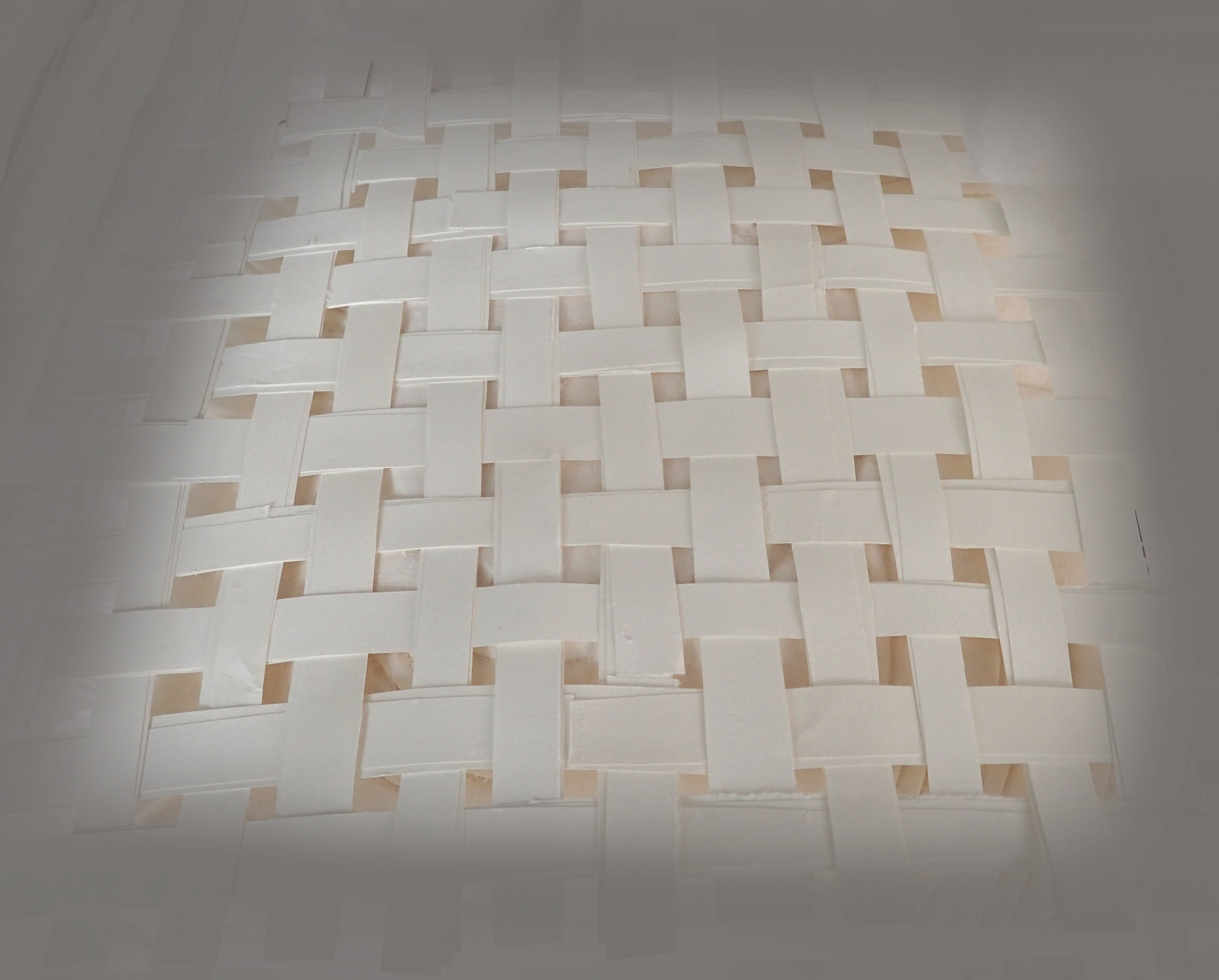
Kiln Carving with Papyros Paper
If this project looks familiar, you are right. But now we have a video with detailed instructions, for those of you who like to see rather than read.
Enjoy!

If this project looks familiar, you are right. But now we have a video with detailed instructions, for those of you who like to see rather than read.
Enjoy!
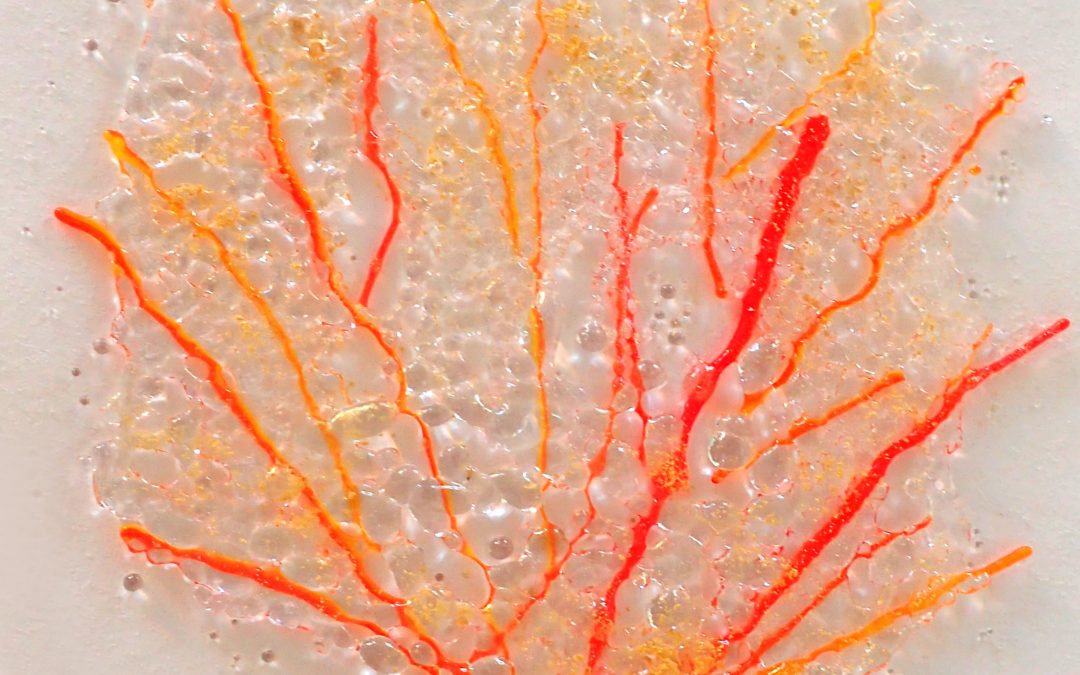


When I first saw the Powder Wafers™ glue film from NO DAYS I liked the idea of being able to create any shape in glass that you could cut out of the glue film. You can use scissors and even paper punches. What kept me from trying it was the recommended firing schedule and having to keep the kiln vented for all those hours.
A) 150°F dph to 300°F – hold :45 B) 250°F dph to 600°F – hold :45 C) 250°F dph to 1000°F – hold :45 D)Continue to fire as normal
Yes you can program a kiln and not worry about it. But somehow I shy away from long firing schedules even more so now, since I heard about those relay problems people have encountered. Knock on wood, so far I have not had a relay break on me in 17 years.
Here is the mold I used for my trial. It is a small piece of Kaiser-Lee Board with an indent. I place it in the big kiln with everything else and took the risk of not even venting my kiln. In the future I will use my firing schedule (see below) and fire the pieces in a different kiln which I can vent easily until it reaches a 1000°F. This is the firing schedule I use for small pieces like this one.
A) ramp up 900°F to 1000°F hold :10
B) ramp up FULL to 1410°F hold 10
C) ramp down Full to 900°F hold 15
D) ramp down 100°F to 700°F hold 0 – let cool to room temperature!

Sorry I did not take any pictures before the firing, but here are the steps. First I placed a piece of Papyrus shelf Paper™ in the size of the glass on the mold. Then I placed the 2 Powder Wafers™ butterflies on the paper with a piece of clear glass on top. In the picture you see the the small dish after firing. Yes, it is a single layer of glass with the butterflies fused to the underside.
This is the mold and the Papyrus Paper™ after the firing. Everything is as usual. No glue residue or anything else and I’m really pleased with the crisp look of my butterflies.
In this 3rd picture you can see the mold and the Papyros Paper™ after the firing. Everything is as usual. No glue residue or anything else and I’m really pleased with the crisp look of my butterflies.
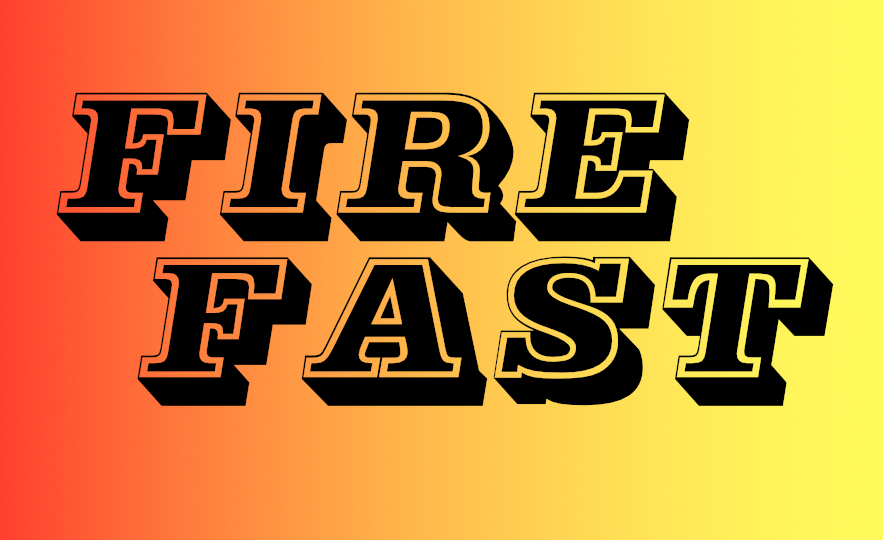
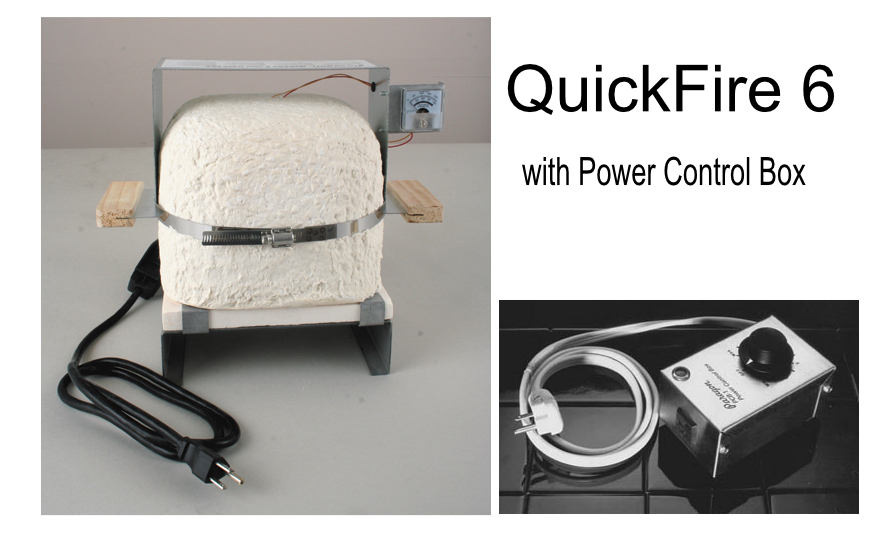
For those of you who do not know about the Paragon QuickFire 6 – here is a picture of it.
And yes it will fire quick and the trickiest part is to stay with it and check your glass often and turn it off, as soon as you like what you see. Kaiser Lee Board does not mind to be fired fast and does not absorb heat any faster than your glass. Therefor it is the ideal combination – both as a shelf and also as a mold material.
Just in case you get distracted it is best to use a QuickFire with a Power Control Box. It will prevent it from over firing, as long as you don’t leave your kiln alone on the highest setting.
Inspired by her request, we added two new options for Kaiser Lee Board. Yes, you can now order the board in the smaller size of 6″ x 6″ in a pack of 2 or you can buy the Quick Fire Kit as shown on the right.
Yesterday one of my readers sent me a question.
“I use a Paragon QuikFire 6 kiln with ceramic-type kiln shelf. Recently, I’ve developed a problem with a smooth area and wrinkles radiating out in the center of the back of the pieces. Could this be a hot spot on my shelf? I do keep it elevated with 1/4″ thick, 1″ long pieces of fiber board, but this no longer helps. There are now dark circular spots on the kiln shelf. After rereading my old copy of your book, I’m wondering if I should switch to Kaiser-Lee fiber board instead of ceramic kiln shelf to better distribute the heat; if so, what thickness fiber board should I use?”
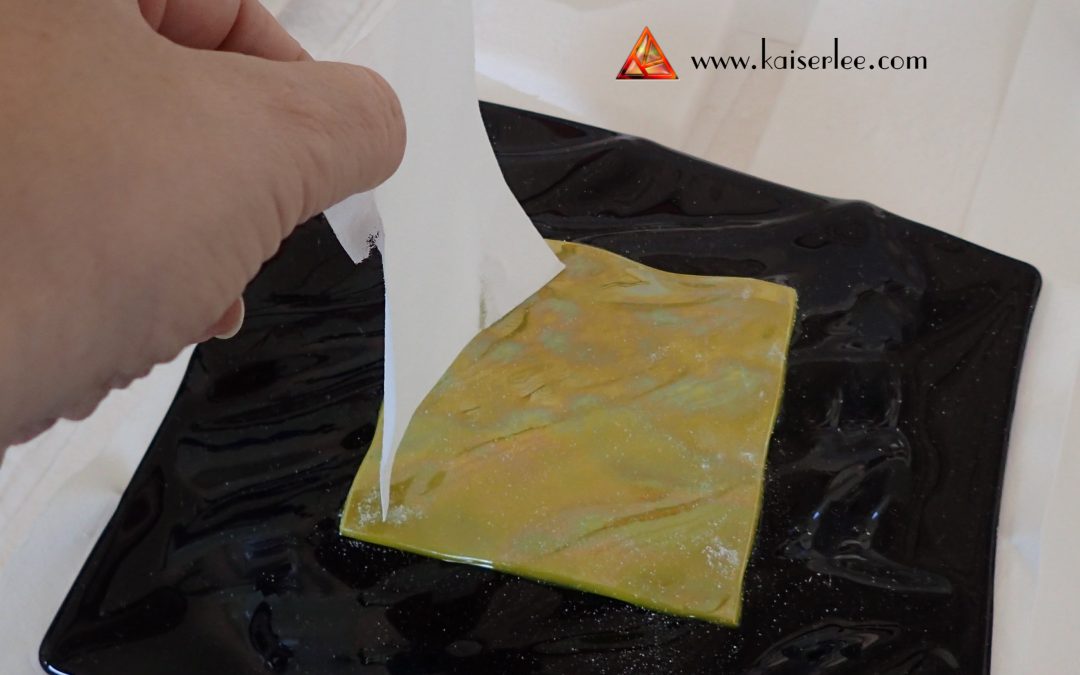
Lately I’m experimenting with Papyros Paper and have made several discoveries. Today I want to share my latest with you. Laura P. once mentioned that she places Papyros Paper on top of a luminescent glass, when she slumps it, after she fused the luminescent side down in the first firing.
With the Kaiser Lee Board molds we generally full fuse and slump in one firing. Until now, I told everyone, that they have to use a reverse fusing mold, if they wanted to keep the luminescent glass on top. The piece that you see in the picture is actually on a reverse fusing mold and I added a yellow luminescent square on the back to stabilize the foot of the dish. This way I had nothing to lose if the piece did not turn out the way I wanted it. (Yes, I hate to waste glass). I covered the yellow square with a piece of Papyros Paper that was slightly larger than the yellow square.
I fired it all the way up to 1420°F (770°C) and hold for 10 minutes. It amazes me, that the Papyros Paper did not leave any grayish residue or marks on the glass, not even on the black. And yes, the luminescent did not fire off.
Let me know what you think in the comment section below. And to be the first to hear about all the other fun things that will come up in the near future, please subscribe to this blog.
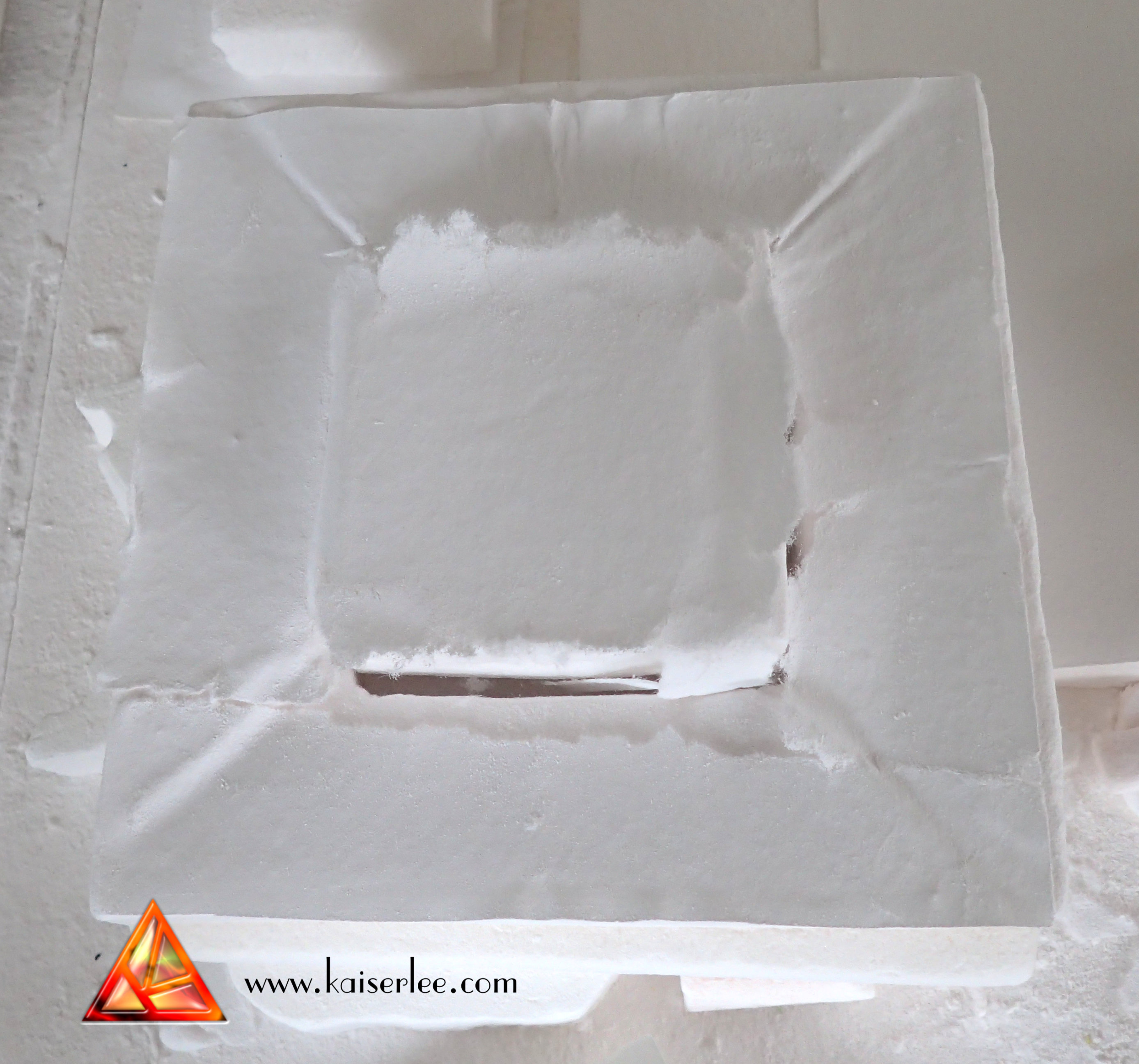
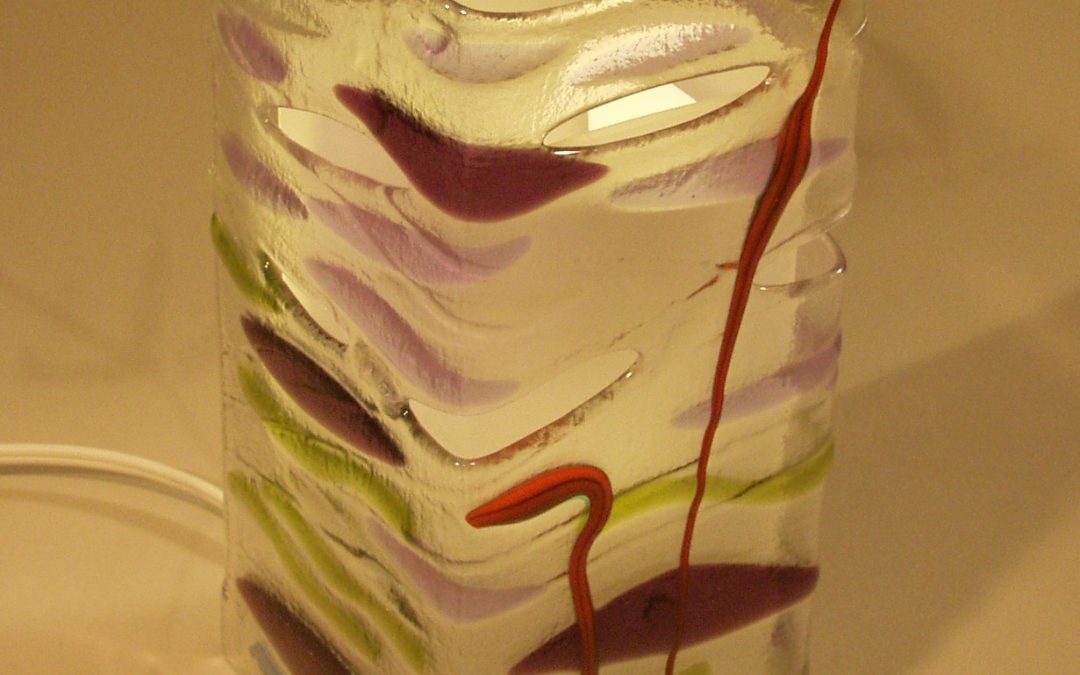
Have you had a chance to learn with my books? If so, please leave a comment at the bottom of this post. If not have a look at the videos below and see if you want to give them a try.
Thank you and Happy Fusing